“You mean you’re certified organic, both on the cattle and the grass?” Former Wall Street Investment Banker was incredulous. “What the heck for?”
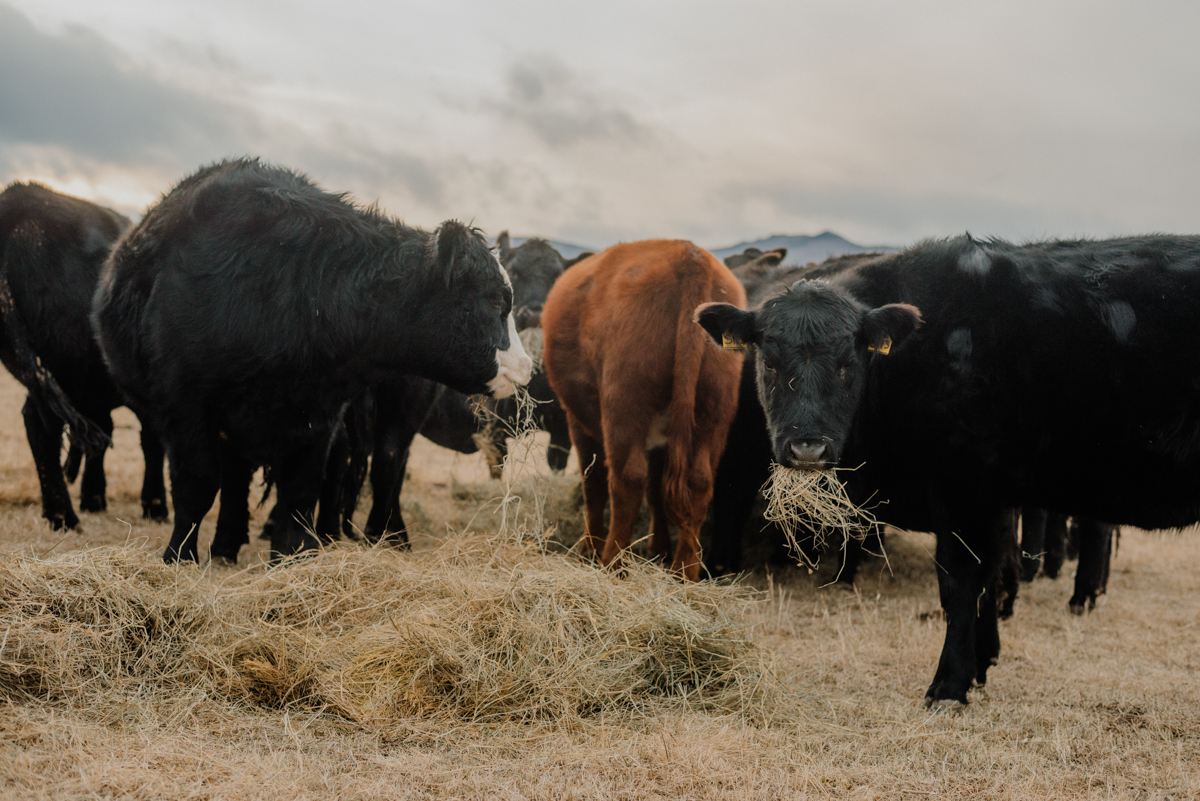
“The consumer wants the whole picture. They want to know for certain that their food is clean, and for cattle, that’s from birth to finish. That means free of chemicals of any kind,” I told him.
“Yeah, yeah, yeah.” He sighed into the phone. I imagined him reclining at his sprawling solid English walnut desk, leaned back in his calfskin leather office armchair, looking out through the massive custom low-e thermopane bay windows of his office, surveying his broad retirement estate behind him. Hundreds of Angus cattle speckled the lush meadows; all his. Verdant timbered mountains rose all around the beautiful spread high in the still-snowy Wyoming Rockies, completing the idyllic vision that was now his reality.
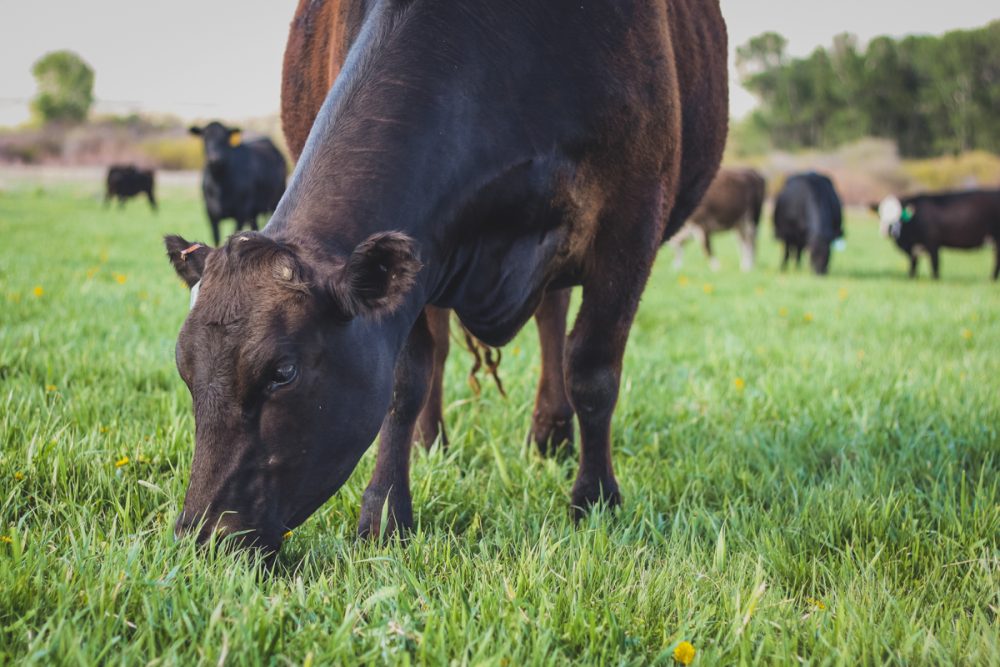
After the hustle of lower Manhattan, retirement quite bored him, honestly. And so, he had taken a mere slice of his investment income and tied it up in the acquisition of some beautiful mountain ranch land on which to raise grass fed beef. It would be fun, he told his friends. And it had to be easy. What could go wrong? He hired a team to help him with his hobby: cattle raising, pasture management, marketing. He envisioned it, and they performed it.
Like he had in his previous life. He was a Wall Street born and bred manager, after all. He specialized on the “buy” side. Hedge funds, mutuals, and the staff to run them. An owner with vision.
I could sense him slowly shaking his head at me. He was thinking I was a little wet behind the ears, even after 20 years in the business of ranching. He went on: “Don’t you get this? They will never know. They’ll just see the word “organic”, and they will buy. That’s all there is to it. They don’t really care. They’re just checking a box, Glenn. Nothing about this is illegal, you know.”
“I know. It’s not illegal.” I had to tread carefully here. I didn’t want to insult the guy; the conversation was interesting; and it wasn’t like my reading righteousness to him was going to change the course of his mind. I’m certain that after all those years in his former life, he was fairly intractable. But in my mind, his paradigm reeked. I had already seen where he was getting his cattle from: the sale barn. No source identification. Just random heifers and steers raised on other ranches in Wyoming. He bought them on a cheap auction market, and equivalent age and bred cattle would be 25% or more on the organic market. I knew- and I knew he knew- that they were 100% percent conventionally raised cattle.
And in that, investment banker saw the creation of a beautiful, risk-free margin.
What it also meant is that every one of those cattle had been raised with chemicals. Backbone chemical pour-ons for lice, and even worms (they permeate the skin of the cow and treat interior parasites as well as exterior; in other words, they permeate the meat, all of it in said bovine). Most of them have hormone implants in their ear (“the very best return on investment in the cattle business”, my former University of Idaho county agriculture agent once told me. “Everyone should implant [hormones].” Basically, you’re an idiot if you don’t).
And some of them had already received therapeutic or subtherapeutic (meaning they are mixed in their feedstuffs) antibiotics. Most of them had insecticide fly tags in their ears when they arrived off the truck from the auction ring. Tags so toxic that if they fall off in a stream while that ear tag wearing bovine goes down for a drink, it will kill the fish in the creek. It says so on the label.
And that is just the cattle. They’ve already almost categorically eaten grass sprayed with numerous herbicides, and had fertilizers applied to it the same pasture.
I’m not making this stuff up, because it used to be my reality. As a teenager and in my twenties, I used to do it for other farmers and ranchers. We even started doing it 30 years ago, before we realized we were heading in the wrong direction.
That direction change galvanized us 25 years back, and we’ve never thought about returning to chemical agriculture.
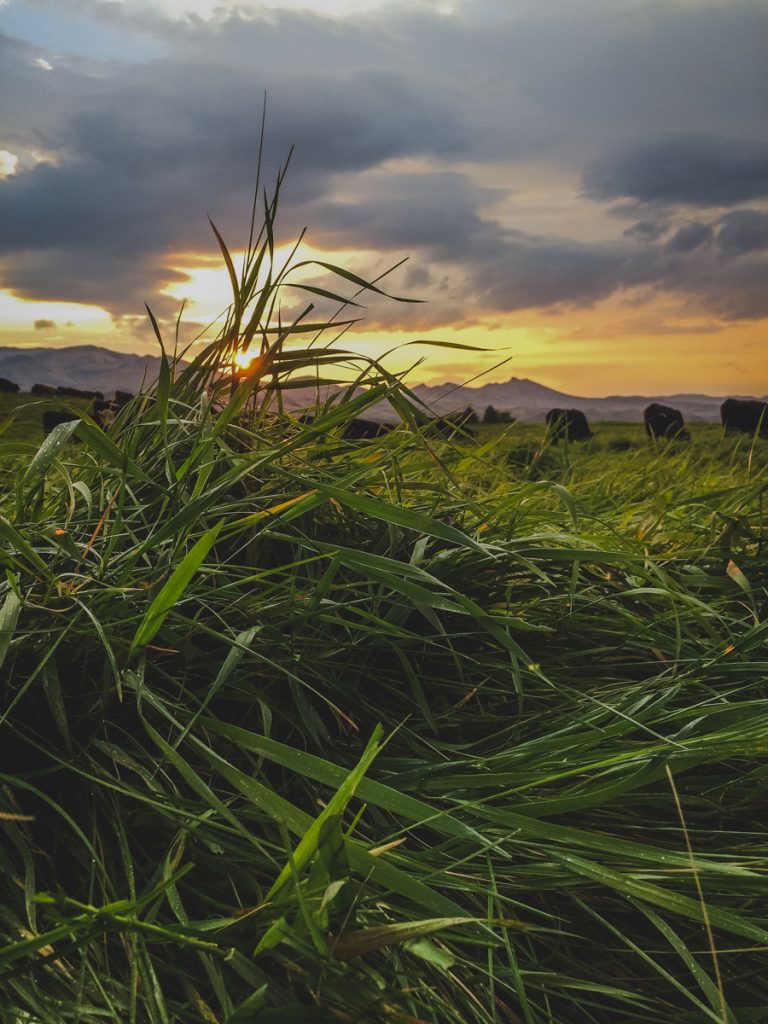
But Mr. Wall Street wasn’t on the same page with me. He was using organic as a marketing tool. Sure, the cattle would be on grasslands he by-the-rules legitimately certified from this point in life on, but the cattle would never be organic. He could continue chemically treating them as long as he owned them and then sell them completely legitimately as “raised and finished on his 100% USDA certified organic ranch.”
He couldn’t put the USDA organic seal on his pack of burger. But he could say the above and be fine.
The buyer of said beef would never know that they just bought a “sale barn steer.” They would grill their burgers on the patio on a warm evening over the next weekend and tell their friends over craft beers that this was grass fed organic beef.
It wasn’t OK. And I knew I would never convince walnut desk man otherwise. He never lied, after all. And to him, there was no sin in omission. It was business. Willing seller, willing buyer.
It’s “smart” business owners like him that certainly have tarnished the USDA organic seal, no question in that. It’s the sad truth. But most of us are jaded enough getting cluster-bombed by continuous advertising around every turn that we are wisely suspecting of such nefarious notions.
But how to find integrity? The truth? Followers of the spirit, or intent of the law, rather than simply the letter?
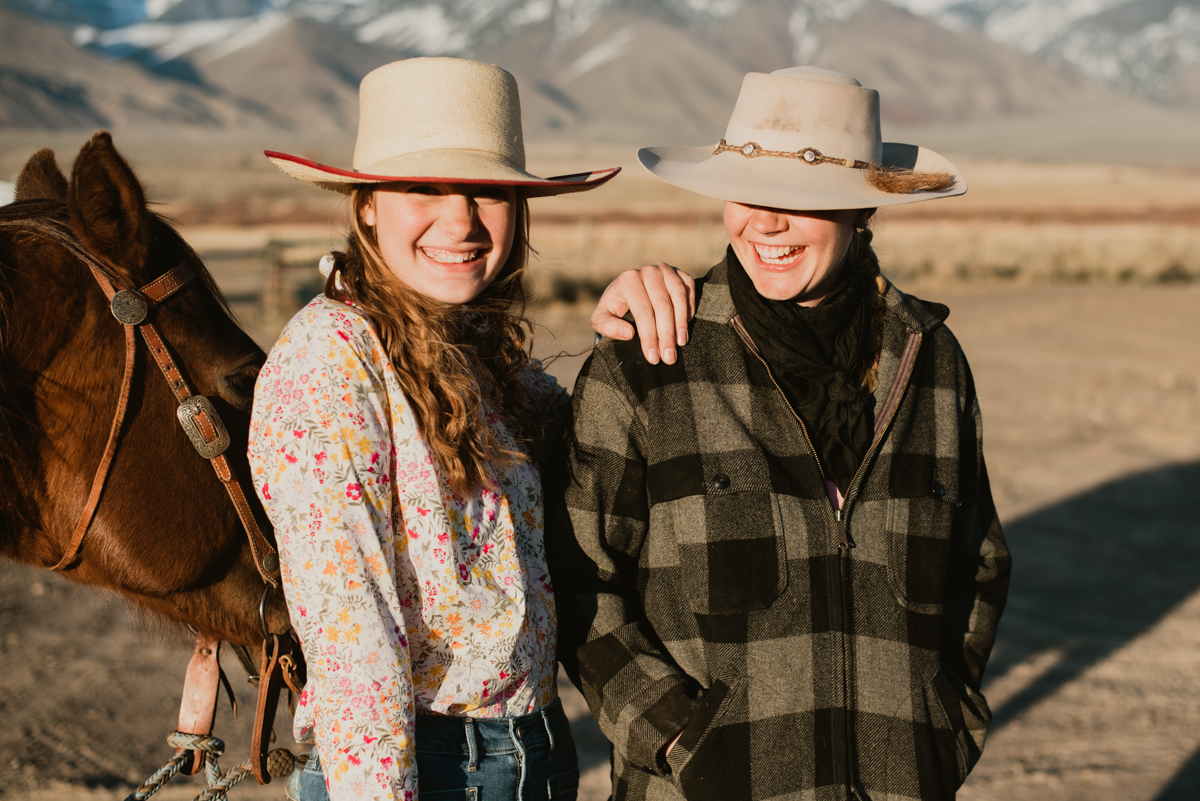
There’s only one way: Relationship. That’s it. Roll back the clock two hundred years, and that’s how most business was done. You looked a person in the eye and shook their hand. On your judgement, your take on the character of that individual, the deal was struck.
Of course, there were crooked people back then. But you learned to ascertain who could be trusted and who couldn’t. You tried them out.
Today it’s no different. For example, when we hire our summer crews, we check them out. Call it stalking if you would, but I simply can’t afford to have a sketch individual stuck up in cow camp over the summer in the middle of nowhere with the rest of my crew. So, we scope them out. You can learn a lot about a person by what they choose to share with the world via social media. And hopefully, you can work through the veneer.
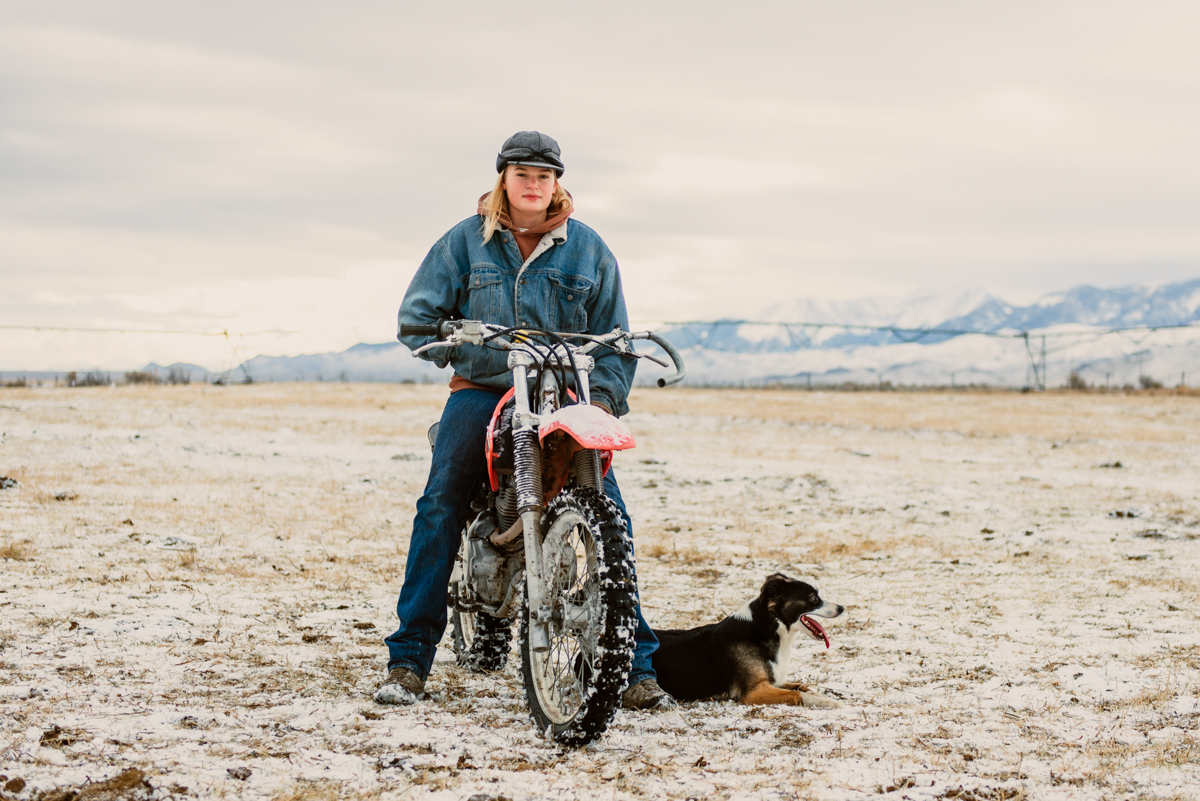
So, dear reader, consumer of healthy foods, likely in search of a wellness quest for you or your family, check the raisers of your foods out! Stalk them! Here are some specific ways you can check out organic in today’s “investment banker marketing era”:
1. See if it all adds up. True organic should equate with the words husbandry and stewardship. Do producers care about soil? Humane treatment of animals? The health of the planet? Or are they simply growing a monoculture of crop on dead soils? Do they have their animals in confinement for their lives? Or perhaps they source their animals from weird places (sale barns!).
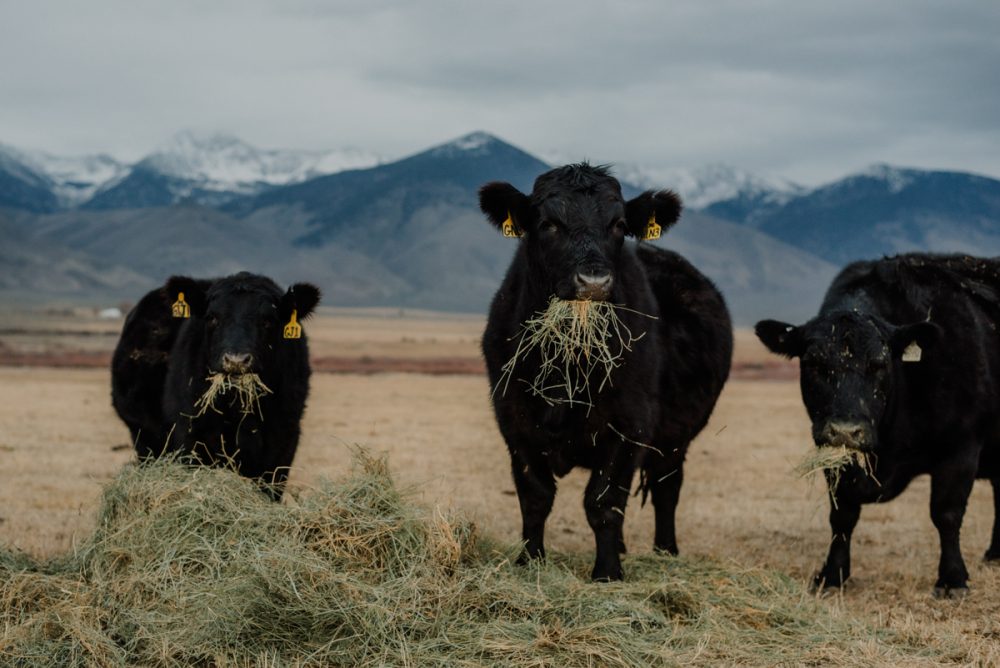
2. What does their product look and taste like? Organic should be better. Sure, the apples won’t be waxed with that crap they put on apples that tastes bad, but they should be more flavorful. A carrot should be a carrot on steroids. Their beef should be something that just needs salt and pepper because it has so much flavor. If it isn’t better, you may have to give them some grace; perhaps their land is newly certified and needs time to reach a level of nutrient density that shows up in their food (it took us 10-15 years). So, give some grace. But eventually, the quality should be apparent.
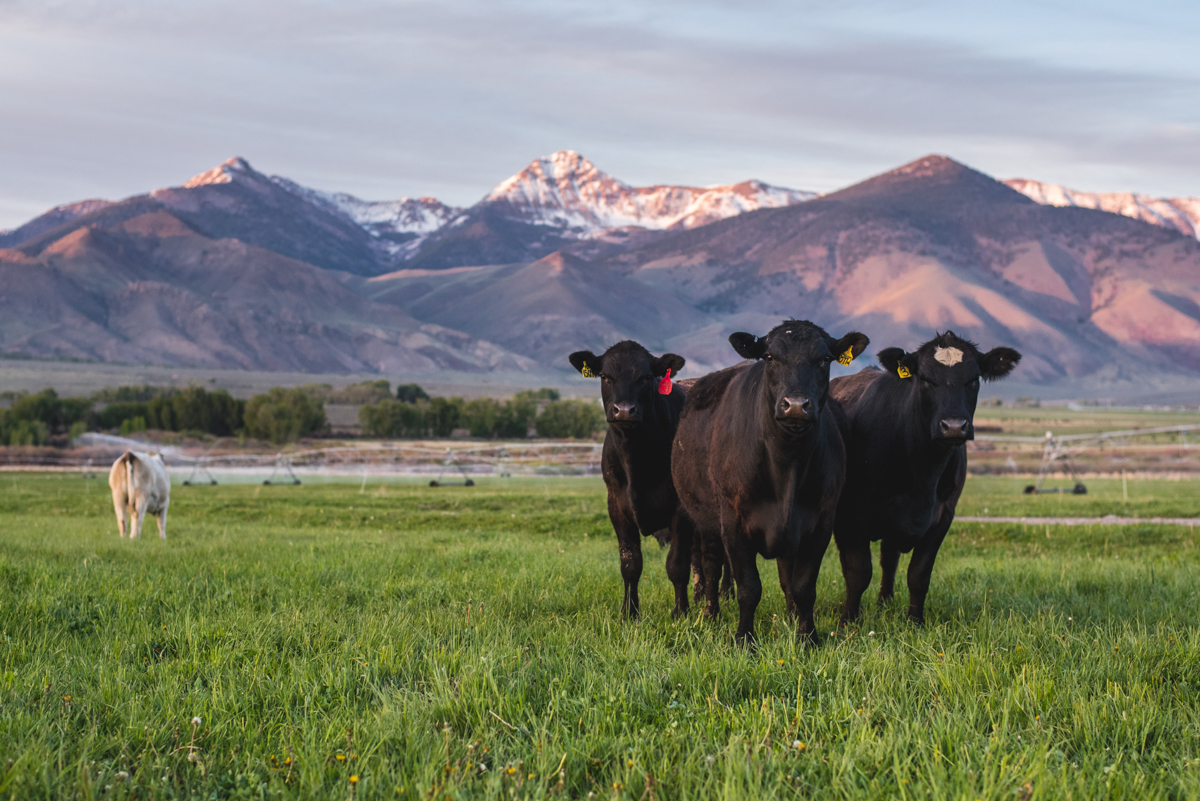
3. See if it is ALL organic. It should be. Every aspect of their supply chain must be organic: the land, the grass, the hay, the corral that you load them in, the cattle, the sheep, the processor’s cooler, the processors process. Even their packaging. All organic. It is all visited by an inspector. Here’s what that looks like on the ground: if one of our beeves goes and spends time grazing on our neighbor’s recently glyphosate sprayed ground (very unusual, but it has happened!), we change the tag to show that it is no longer an organic animal. We then sell it at full disclosure as a non-certifiable beef.
4. Check their ingredient lists if they process. We make sausage from our beef and pork. Some of it needs honey. Do you have any idea how hard it is to source certified organic honey in the US? It’s pretty much impossible and quite expensive if you can find it. That’s because bees roam up to 3 miles to forage, and, you guessed it, they inevitably forage on ground that has been sprayed, because the simple fact is that pretty much every single acre in 99.99 percent of America has been chemically treated.
5. Are producers in it only for the margin organic offers? We did organic because we were already coming close. It wasn’t a big leap to be certified. We went through with it, and it wasn’t a big deal on our practices. It turns out that the margin isn’t much different after incurring the additional costs involved with organic (try hand-grubbing weeds on 5000 acres a year because you don’t use chemicals, or releasing $5000 worth of beneficial insects on your ranch).
6. What if they say, “we’re beyond organic?” Here’s where it gets quite a bit like our Wall Street friend. MANY producers use this term. First off, it is illegal. Enforceable. Does the USDA do it? No. No resources. Ask producers for their certificate. If they claim that they are “beyond,” it means that they are organic and have gone “beyond” what organic asks, right? Wrong. The fact is that every one of these producers who we have confronted on the use of this sequence of words has really no idea what certification requires. It turns out many of them use herbicides on their pastures. Pour-on chemicals on their cattle. They. Have. NO idea. And it is wrong. It is crooked, whether it is intentional or not.
So, is organic hopeless? A lost cause? I would say not. I view it as a two-pronged thought process for you, the consumer. First, the burden remains on you to at least invest in a relationship with the producers of your food. Read their newsletter if they have one. Get on their Instagram or Facebook. Shoot them an email.
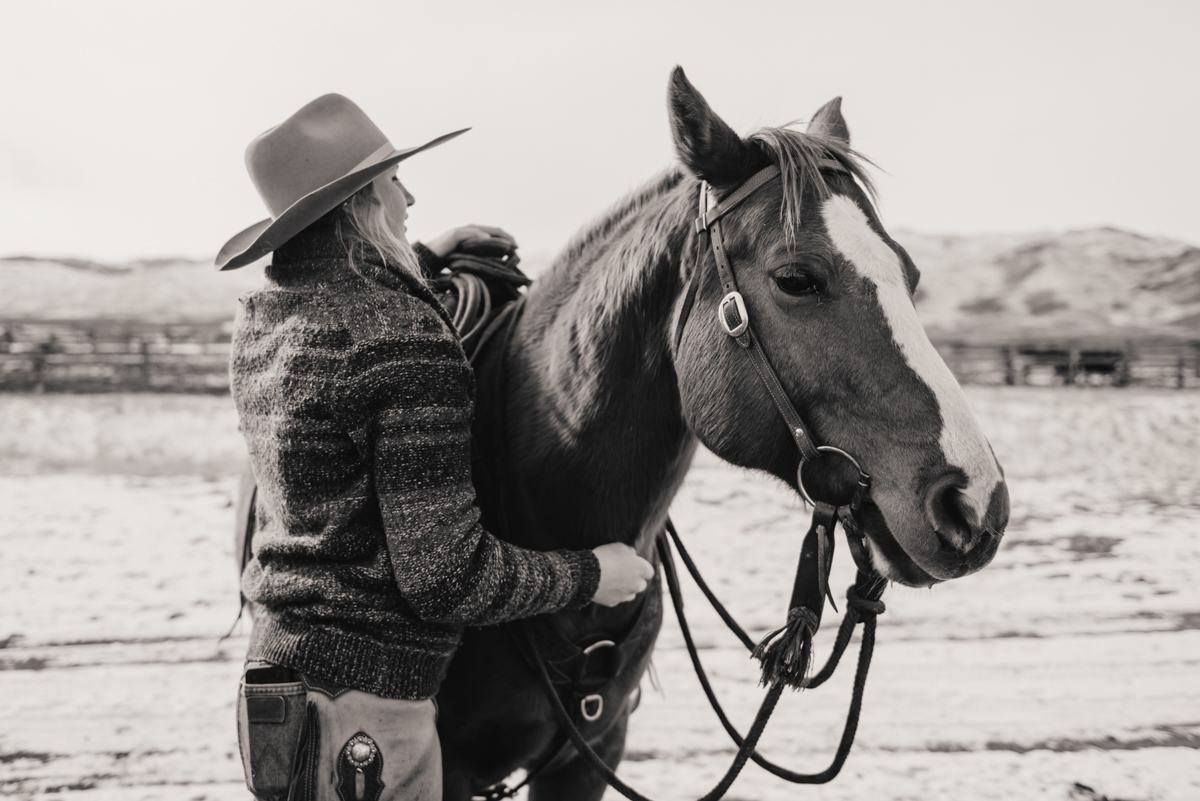
Second, that certificate from USDA is just one reason to trust someone. For us, I think it is too much of an ask to simply say, “trust me” to a potential customer. Instead, we tell them the story of who we are, what we do, and why we do it through various channels (in the previous paragraph). Then, they can see our USDA organic seal and view our certificate, indicating that a disinterested 3rd party has gone through our entire production system and put their stamp of approval on it. It’s better than just a blind faith in a producer that simply says, “We’re beyond organic!”
I couldn’t trust them. After all, they may be reselling cattle from the auction barn.
Happy Trails.
-Glenn
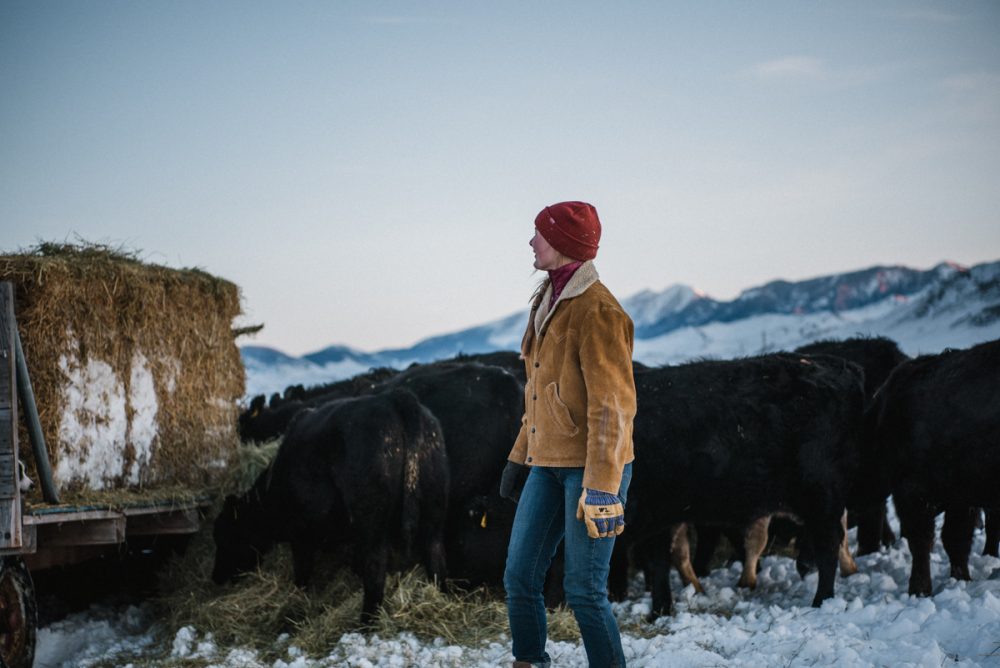




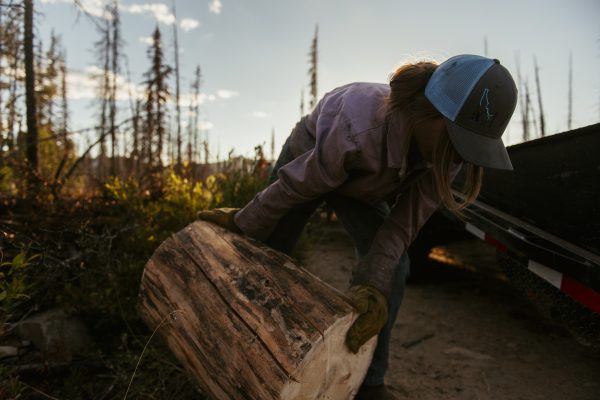


Marcia Ferrero
Thank you for educating me on what it means to be truly “organic†…….most consumers are ignorant of what this means. Someday in near future I would love to visit your ranch to personally thank you and your family for all you do for us, the animals and this great land.
Stay safe!
Caryl Elzinga
Marcia
Thanks for reaching out! I agree that most consumers are indeed ignorant. We were until we saw how many people hack the word. Even the very chicken eggs we buy in the little grocery store when our hens slow down say organic on them, although I know for a fact that they are NOT at all certified. But we love those people, and they are just trying to do the right thing and make a little extra money.
It is what it is. My only axe to grind is that we, the people need to know the people who raise our food. It might be through social media. Or through this channel right here.
And indeed, we need to have a “ranch day” where we could have a giant cookout and visit around the campfire for a few days. We hope to do this soon!
-Glenn
Cindy Salo
Glenn,
Thanks for this uplifting reminder that doing the right thing is its own reward. (I admit that when I see the rewards of doing otherwise, I sometimes grumble that doing the right thing HAS to be its own reward…).
Hope you’re all staying warm.
Cindy
Caryl Elzinga
Great to hear from you Cindy!
The right thing…indeed ensures at least that we can sleep at night! If the cows don’t get out!
I KNOW you are staying warm in the south country.
-Glenn
Bob Kenworthy
Thank you for providing some enlightenment on the “organic†scammers that are out there. We eat only Alderspring beef because it is healthy, better for the environment, and just plain tastes better than commercial beef. And we trust you!
One thing you didn’t give Alderspring credit for that I think is just as important is your management practices on your BLM allotment. I wish that all of the ranchers using public lands were as interested in being such good stewards of the lands that belong to all of us…
Caryl Elzinga
Bob
It is really great to hear from you! Some of my nicest memories are from 20 years ago being at the Eighth street farmer’s market and seeing you and Kathy there. Thanks for your kind comments about our beef. After nearly 30 years on it, I hope we are still slowly improving our quality. We are sure trying.
As far as the federal lands, I don’t know how to proceed there. We have seen incredible progress on habitat improvement. Beavers have returned. We even spotted a Moose last year (first one in 50 years). Our aspen stands are 20 feet tall (they were dying just 17 years ago). We saw trout in a creek we never have seen any before in last year (the driest year on record!). Our preliminary carbon results are very high (if we included the data in our current calculation, which we don’t because we don’t have enough repeatable data) would change our 4 lbs of CO2eq put in the soils per year per pound of beef to more like 16.
So I believe this is right, and truly regenerative. But Bob, it seems no-one cares about the federal lands. I can’t get land managers at all interested. I can’t get ranchers interested. For Caryl and I, it is an absolute no-brainer from a carbon standpoint. Here we have dry grazing lands being fully a third of all the land in the US; the opportunity for carbon (and even more, water) retention is enormous if only we would practice regenerative grazing.
Check out this week’s newsletter, Bob. We quantified the carbon and climate results that we have, and there is indeed hope to change agriculture!
If you have any ideas how we can get the word out that there is hope for rangelands, I am all ears!
-Glenn
Mike Morano
I distributed this article to my family as a cautionary tale about anything labeled ‘organic’. Thanks to you and your family to what you do and how you do it.
Caryl Elzinga
Mike
So great to hear from you! I think you’re hitting the nail right on the head here. It is not about calling up the USDA and telling them to write the regulations that are going to stop the hackers of the rules! It is all about the grassroots relationships–telling your family, knowing your producer. Thanks so much for this!
-Glenn
Leo Younger
The ear tags with slow-release insecticides to control face, back, and foot flies these days are often labelled BAYER which bought Monsanto. Insects always develop resistance so the ranchers & farmers have to change insecticides each season. I had to tell a certified organic farmer about the meaning of those tags when I saw them on cattle his wife had recently bought. They didn’t know until I told him. A 100% grass-fed cattle rancher told me about his use of ear tags, but I had to ask him first. Lying by omission is still deception. An organic pig farmer controls worms with non-toxic food-grade DE. A beef rancher controls worms with ivermectin which some people & doctors use for covid. All toxins reduce dung beetles populations.
Caryl Elzinga
You are correct on all counts Leo. It’s ironic that even the label tells us how toxic these things are (like the fish thing), and people care not. We knew we were in trouble when I (Glenn) would go to bed after insecticide-tagging cows on our first ranch all day back in the early 90s with a screaming headache.
It was the same headache I got when I hand sprinkled the extremely toxic Temic insecticide on tropical foliage when I was 16 (no suit, gloves or respirator). I knew that it was the chems.
So that ended that. It took some time, but we began to become rightly suspicious of every chemical the county agent and BEEF magazine told us to use (the animal pharma companies buy several prime rib dinners for local producers every year). And they NEVER talk dung beetles, soil biota or the animal’s own immune system.
The answers are there, but they are in nature. It’s work to observe, observe, and learn from nature. Much more than clipping on the fly tag, or putting the drench or back pour on the cow. One is industry. The other one is husbandry.
Thanks, Leo.
-Glenn
Leo Younger
https://www.realorganicproject.org/rop-certified-farms-west/ The Real Organic Project Project, under Idaho, has Alderspring listed as the first entry. As an organic consumer, I help support this organization, and you other buyers can also donate. To clarify my previous reply comments, above, not all ranchers use ear tags which have insecticides, but the vast majority do. Alderspring is among a very small minority which use ear tags only for identification. Most ranchers won’t tell you, the consumer, how they control internal and external parasites, even if you specifically ask very detailed questions. In person, some become evasive, or they have to think about it, which is a clue. By email, some simply don’t reply, or they guess at what they think you want to read. We oppose deception.
Caryl Elzinga
LEO!
We LOVE the Real Organic Project! One of their directors, Linley Dixon, has spent time on Alderspring, and even in cow camp. They are the best thing going in certification right now, and it’s probably because they can’t be ‘bought off’ by corporate America! They are grass roots–and they are growing like the wind. Check it out, all of you! Just google Real Organic Project!
Another worthwhile 3rd party to check out for integrity is the Cornucopia Institute. They also have certified Alderspring. They have a scoring system that basically tracks the integrity of a given operation. Check them out!
Thanks so much Leo for bringing this up!
-Glenn
Natalie
People can be such a disappointment.
That investment banker doesn’t grasp or care about the difference between illegal and immoral. He’s definitely not an organic farmer and there will always be a percentage of the population that takes this route with anything.
The USDA really needs to get a grip (power corrupts) and stop allowing incorrect practices to be permitted in the organic label, thereby sticking with the spirit. It’s great that Real Organic Project has tried to do what USDA has foregone, but it should never have been necessary.
If farmers don’t want to do what’s needed to honestly be organic, that’s fine. They should just sell their junk as conventional and be done with it instead of continuing to deceive buyers, most of whom won’t take all of the necessary steps to verify that what they’re purchasing is what it states. And it’s wrong that they would need to do so. The labeling needs to change so that it can be trusted.
Caryl Elzinga
Natalie! I agree with you that USDA needs to do their due diligence to stop the hackers. But I just feel like with every new rule, there’s going to be more hacking. People will always find the workaround; those ‘smart’ people.
So, once again, it will end up on us. It’s our food, after all. We need to develop a relationship with the folks that produce our food. I had to buy some beef broth while I was on the road with Caryl last week, as she just had knee replacement surgery, and that sounded good. We were stuck in a hotel for a few days. So I bought some in a tetra-pack. You know, the cardboard shelf stable 100% certified organic grass fed bone broth. Full circle was the brand.
So then, I check the EST number. That micro-printed USDA bug that shows up on the front under the organic seal. What did I find? A giant food processing mogul I have never heard of in my life that has like 20 ten acre 4 story factories in the US and Canada. NO IDEA where the cattle came from. Clueless. And I am trying to just serve up some nice broth for my wife to heal up on.
So this is where we are today, as a culture, a society. CLUELESS.
Now, thank God, we’re home again, and we can enjoy our own broth. But it was a micro lesson on how much it really takes to know.
Unfortunately, the government will never take care of us. Corporate America and people in the glass windowed and walnut desked boardrooms will always be hacking a new solution to get your money in their pockets while nicely, succinctly following the government regulations to the LETTER.
That burden will always rest on us.
Thanks, Natalie.
-Glenn
Leo Younger
Speaking of bone broth, one of your beef joint bones, which typically separates into several bone pieces after it’s cooked long enough, can provide adequate minerals to keep the body’s bones and teeth in good health. Advocating for nose-to-tail consumption, please consider home-made bone meal, by using surgical stainless steel bone rasps, such as Putti, a style of surgeon’s rasp that has multiple surfaces including convex, concave, and cylindrical, all in the same tool. One end has a 3.5 inch section with the convex and concave surfaces on opposite sides. A middle section of 4.5 inches is smooth to serve as the handle. The other end of 4 inches is cylindrical and useless because it’s too coarse. Another useful tool is a small stainless steel hoof rasp, about 8 and 5/8 inches long, mostly smooth to serve as the handle, with 4.5 inches flat rasp surfaces. Then there’s a marrow spoon, a 9.5 inches stainless steel tool with a long rounded spoon at each end, one wide and one narrow, especially useful for Osso Buco and other marrow bones. The joint bones yield the most bone meal. The Putti rasp can reach inside marrow bones. One bone can last many days, sometimes weeks, rasping it daily, by recooking it every day to prevent spoilage. Most people just add organic apple cider or other vinegar to release more minerals into the broth. Rasping takes time and effort, as surgeons and hoofed animal owners know. It’s a worthwhile skill.
Caryl Elzinga
this is a great tip, Leo. Thanks so much for this! Love the rasping idea!
-glenn